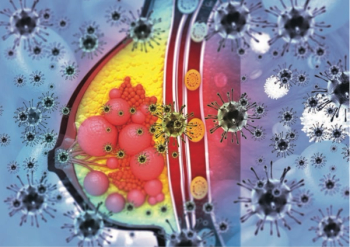
Oncology NEWS International
- Oncology NEWS International Vol 18 No 4
- Volume 18
- Issue 4
More support for MRI in pinpointing tumor recurrence
Researchers from the division of neuro-oncology at the Hospital of the University of Pennsylvania found that the fraction of malignant histologic features in enhancing brain neoplasms that recur after treatment can be predicted by using the relative cerebral blood volume (rCBV) fraction on standard MR imaging studies.
Researchers from the division of neuro-oncology at the Hospital of the University of Pennsylvania found that the fraction of malignant histologic features in enhancing brain neoplasms that recur after treatment can be predicted by using the relative cerebral blood volume (rCBV) fraction on standard MR imaging studies.
Measuring rCBV offered improved differentiation between recurrent neoplasm and treatment-related necrosis, wrote Philadelphia-based Emerson L. Gasparetto, MD, PhD, and colleagues, including Ronald L. Wolfe, MD.
The authors determined that the rCBV threshold was 1.8 times that of normal-appearing white matter and that a unit increase of rCBV was associated with a 254-fold increase of the odds that enhanced tissue was recurrence (
Articles in this issue
over 16 years ago
Aureon launches prostate cancer predictorover 16 years ago
Ascenta Therapeutics cements treatment potential of AT-101over 16 years ago
Pathwork tissue test passes muster in multi-center investigationover 16 years ago
Hologic nabs approval for two new HPV testsover 16 years ago
Soy may protect against breast cancer in Asian womenover 16 years ago
P53 mutation linked to advanced CRC in African-Americansover 16 years ago
Increased mortality risk cannot be excludedover 16 years ago
Research restores yoga’s role in active therapyover 16 years ago
MRS may eliminate need for invasive brain biopsyover 16 years ago
Who's NewsNewsletter
Stay up to date on recent advances in the multidisciplinary approach to cancer.

















































































